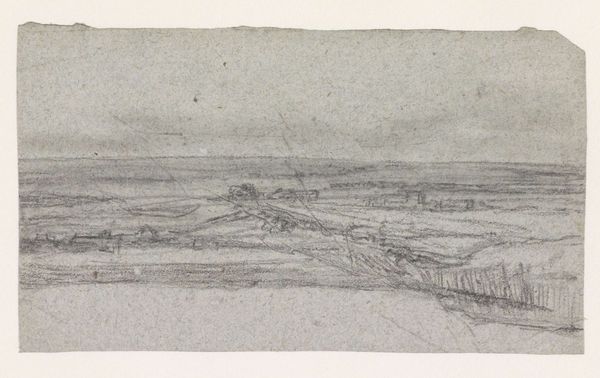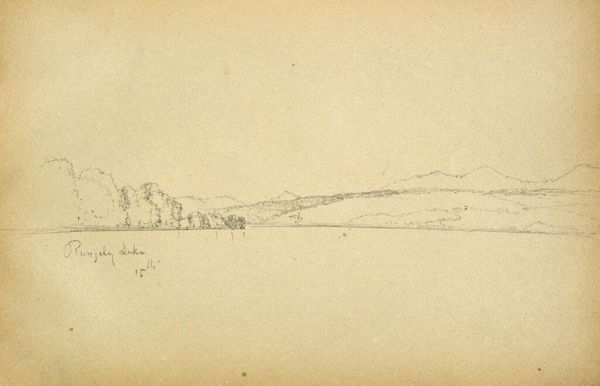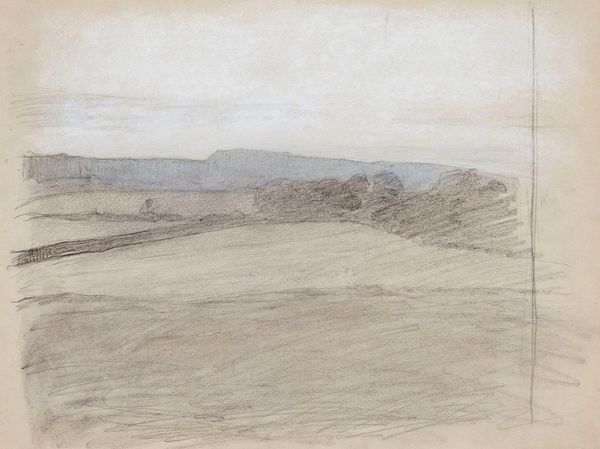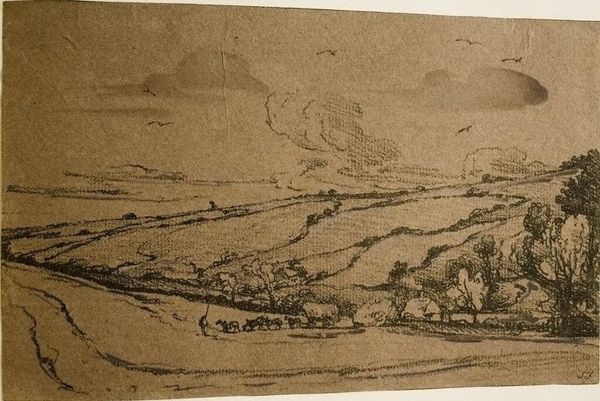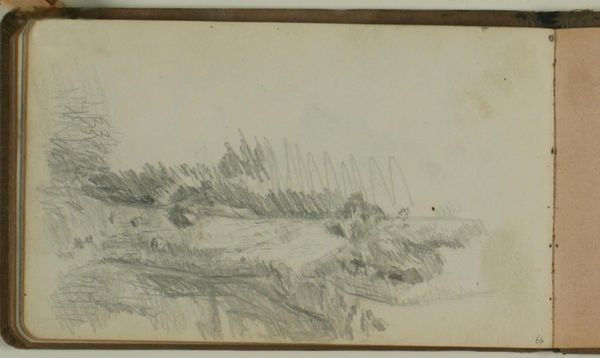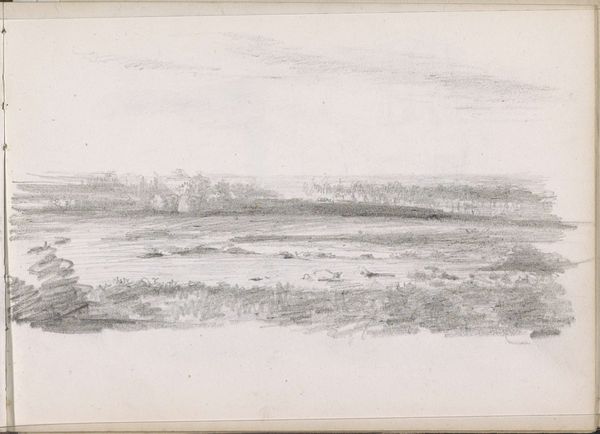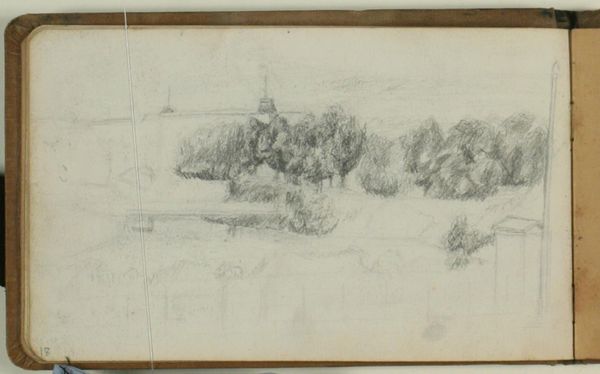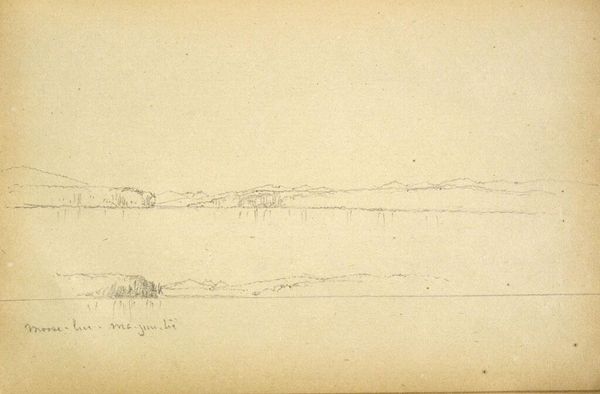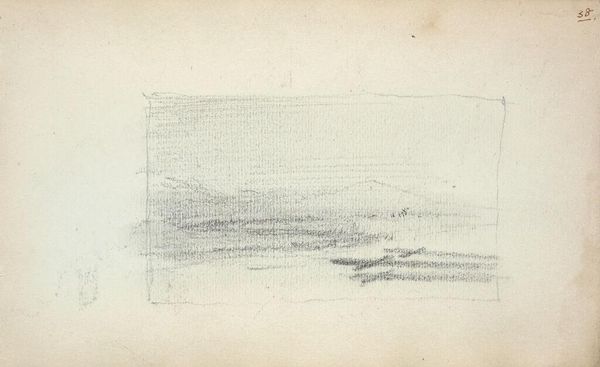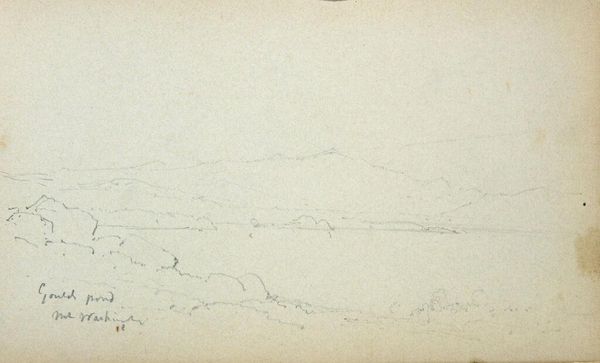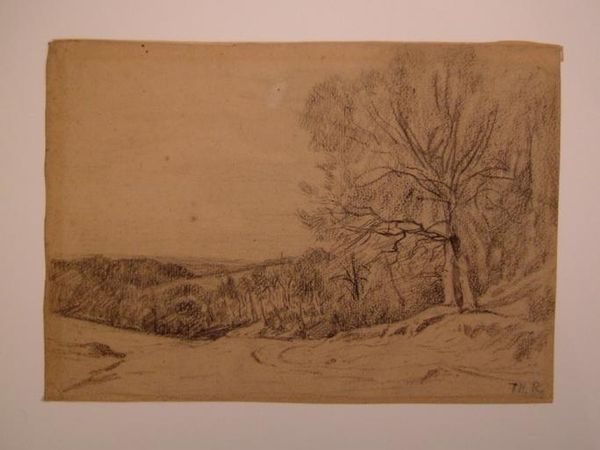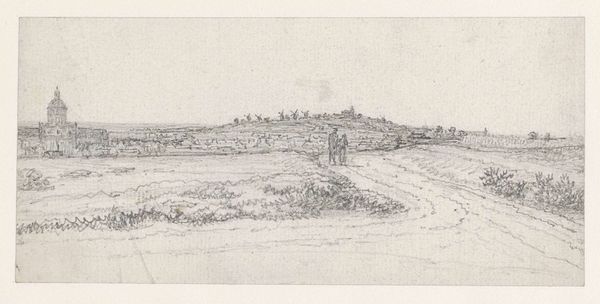
drawing, print, etching, pencil
#
drawing
# print
#
etching
#
pencil sketch
#
landscape
#
pencil
#
realism
Copyright: Public domain
Curator: Here we have "Paysage" by Théophile Alexandre Steinlen, executed in pencil and etching. Editor: Immediately, I notice a kind of desolate tranquility. It’s minimal, almost barren. Is it the bleakness of the lines that brings that feeling? Curator: Well, Steinlen was deeply invested in social realism and graphic arts, especially lithography. He was very much attuned to the materials at hand and how cheap printmaking could democratize images. This etching and pencil work allowed him to produce multiples relatively inexpensively, enabling widespread circulation of this vision of the landscape and what that says about ownership, land rights... Editor: I see. While you're talking of the printing and circulation I can’t help but notice the twin structures in the background…they look almost like forgotten sentinels, or perhaps even ruins. Does that speak to some longing for a lost time, some kind of medievalism being alluded to, alongside this very gritty approach? Curator: Perhaps. The medium itself -- etching -- lent itself to such graphic depictions as Steinlen adopted a common means of visualising working-class struggles at the turn of the century. It could be an intentional way of commenting on societal issues... poverty, inequality and rural life. Editor: So, for you, these images are more directly connected to the social concerns made tangible in the raw process of etching rather than loaded with historical symbols? Curator: Precisely! It’s about the labor and the distribution method. In its time, this etching might have acted as propaganda or an artistic cry, reflecting contemporary anxieties felt amongst the laboring class, particularly regarding rural decline or economic shifts that displaced farm-workers. The method makes his social commentary reach the target. Editor: And here I was drawn to a possible symbolism of societal change with crumbling watchtowers! I suppose it underscores how images and their effects vary so drastically between the viewer and the maker and also depending on the historical conditions. Curator: Absolutely! Considering the materiality opens avenues for richer understanding. Editor: Indeed! Both social context and visual symbolism certainly leave their mark on a work such as this.
Comments
No comments
Be the first to comment and join the conversation on the ultimate creative platform.
